My friend Ryan O and I have fished several pickerel tournaments in New Jersey and got first place in every one of them. When I first moved to New Jersey, I was not familiar with this toothy creature that kept cutting off all my expensive spinners!
I quickly started to use wire leaders and target this fish because pickerel are so much fun to catch! Some bass fishermen don’t like pickerel because they compete for the same food as pickerel can take over a lake with their aggressive behavior.
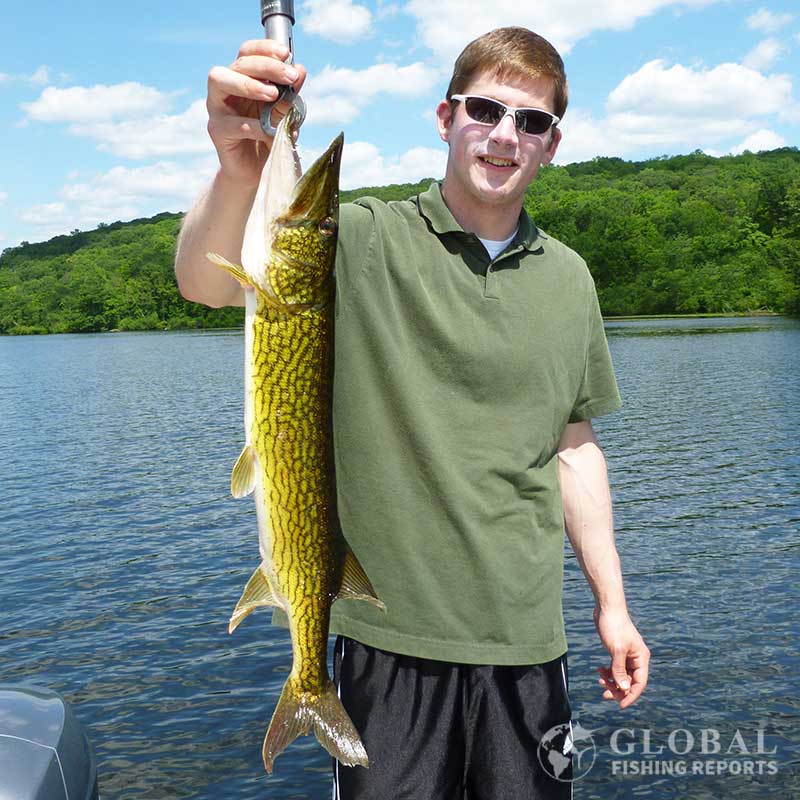
The Key to Catching Pickerel
The key to catching lots of pickerel is covering lots of water in depths ranging from 1 to 6 feet and reeling the lure in fast! If you think you are reeling too fast for a fish to bite, reel twice that fast and you will start catching lots of pickerel!
Pickerel do not get as large as northern pike and musky but are common at about 24 inches which is about a three-pound pickerel. They’re incredibly aggressive predators and will strike at almost anything moving quickly through their territory.
Best Techniques for Pickerel Fishing
Fast Retrieval Technique
When targeting pickerel, I always retrieve lures much faster than I would for bass. The lure should be in the top 6 inches of water. This helps keep the spinner above the weeds! Also, you frequently get to see the fish chase the lure and strike which is super fun!
Generally, cast past where the fish are likely to be as to not scare the fish with a large splash. If the fish are being aggressive they will quickly swim toward the splash and bite the lure before tension is even added to the line.
Using Steel Leaders
I recommend using a 12-inch 20-pound steel leader. Having a steel leader makes it so the fishing line does not get cut by the pickerel’s teeth. I like using leaders that are black, not silver but either one will work. The leaders can be from 6 inches up to 24 inches in length. The 12-inch or 18-inch give the best presentation of the lure in my opinion, however even the short 6-inch leader will provide protection from the sharp pickerel teeth.
When holding pickerel, I always use a lip gripper or fishing pliers because they have extremely sharp teeth that can cut you as easily as they cut fishing line.
Lures Options for Pickerel Fishing
Most bass fishing lures will work to catch pickerel but the trick is to reel them in faster than you would when bass fishing. Spinners, stick baits, and spoons are all good options. Pickerel will also eat baits like frogs, minnows, creek chubs, salamanders, and crayfish. Many anglers know that bass eat everything and pickerel are the same way and are very aggressive feeders.
Spinner Baits
Mepps Spinner Number 5
A Mepps number 5 spinners with a steel leader is my go-to setup for pickerel. I also use a 20-pound braided line so that the lure can be cast far and be strong enough to pull a hooked fish through weeds if needed. As mentioned above the key is to reel fast. The lure should be in the top 6 inches of water. This helps keep the spinner above the weeds! Also, you frequently get to see the fish chase the lure and strike which is super fun! A number 5 Mepps spinner weighs 1/2 ounce.
When fishing clear water on a bright day this same lure with a silver blade also works great. Stick with bronze in murky water and in low light or overcast conditions. The general rule for bait colors when fishing anywhere is dark lures in low light and murky conditions and bright lures on sunny days in clear water.
However, there is rarely a bad time to use a Mepps spinner. Lots of water can be covered quickly which helps locate and catch fish. Generally, cast past where the fish are likely to be as to not scare the fish with a large splash. If the fish are being aggressive they will quickly swim toward the splash and bite the lure before tension is even added to the line.
20-pound steel leader for Pickerel
I recommend using a 12 inch 20-pound steel leader. Having a steel leader makes it so the fishing line does not get cut by the pickerel’s teeth. I like using leaders that are black, not silver but either one will work. The leaders can be from 6 inches up to 24 inches in length. The 12-inch or 18-inch give the best presentation of the lure in my opinion, however even the short-6-inch leader will provide protection for the sharp pickerel teeth.
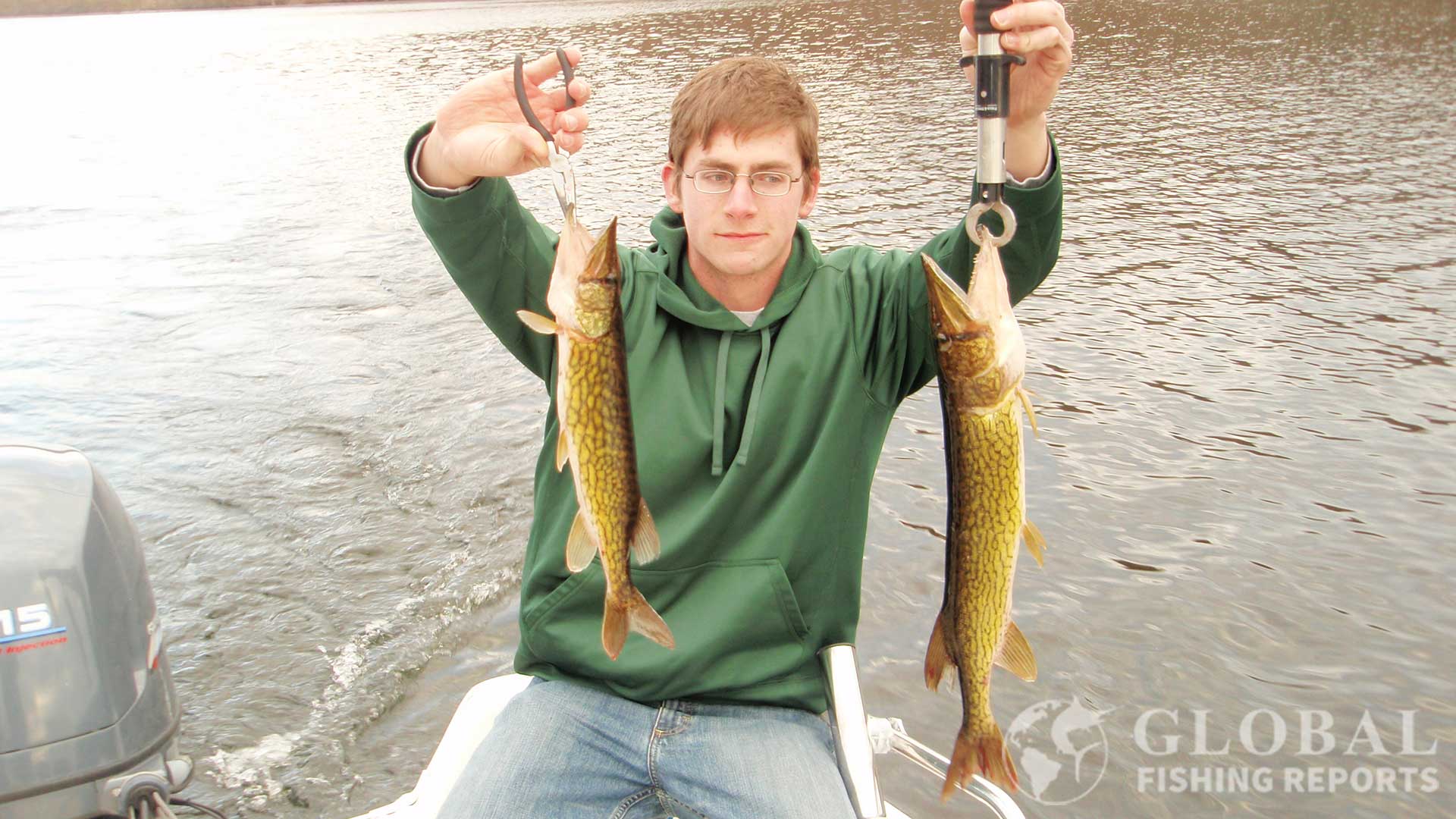
In the picture below I am holding two pickerel that were caught using Mepps spinners. Notice I am holding the fish with a lip gripper or fishing pliers because they have sharp teeth.
Mepps Spinner Number 3
A Mepps number 3 is the best pickerel lure when fishing in smaller areas of water. In smaller areas far casting is not as important and this is a good lure to catch bass and pickerel. A Mepps number 3 weighs 1/4 ounce. These spinners are typically fished with freshwater spinning reels. This type of reel allows for the furthest casting and fast retrieve speed.
The lure should always be fast when targeting pickerel. Reeling slowly is better when targeting bass. Using a Mepps number 3 vs a Mepps number 5 makes it so that splash does not make as much noise. However, most of the time noise is good for aggressive fish. If you are going to use a baitcasting reel make sure it has a high gear ratio so the lure can be retrieved quickly. The lighter lure is also a bit easier to keep in the top six inches of the water column which helps avoid weeds.
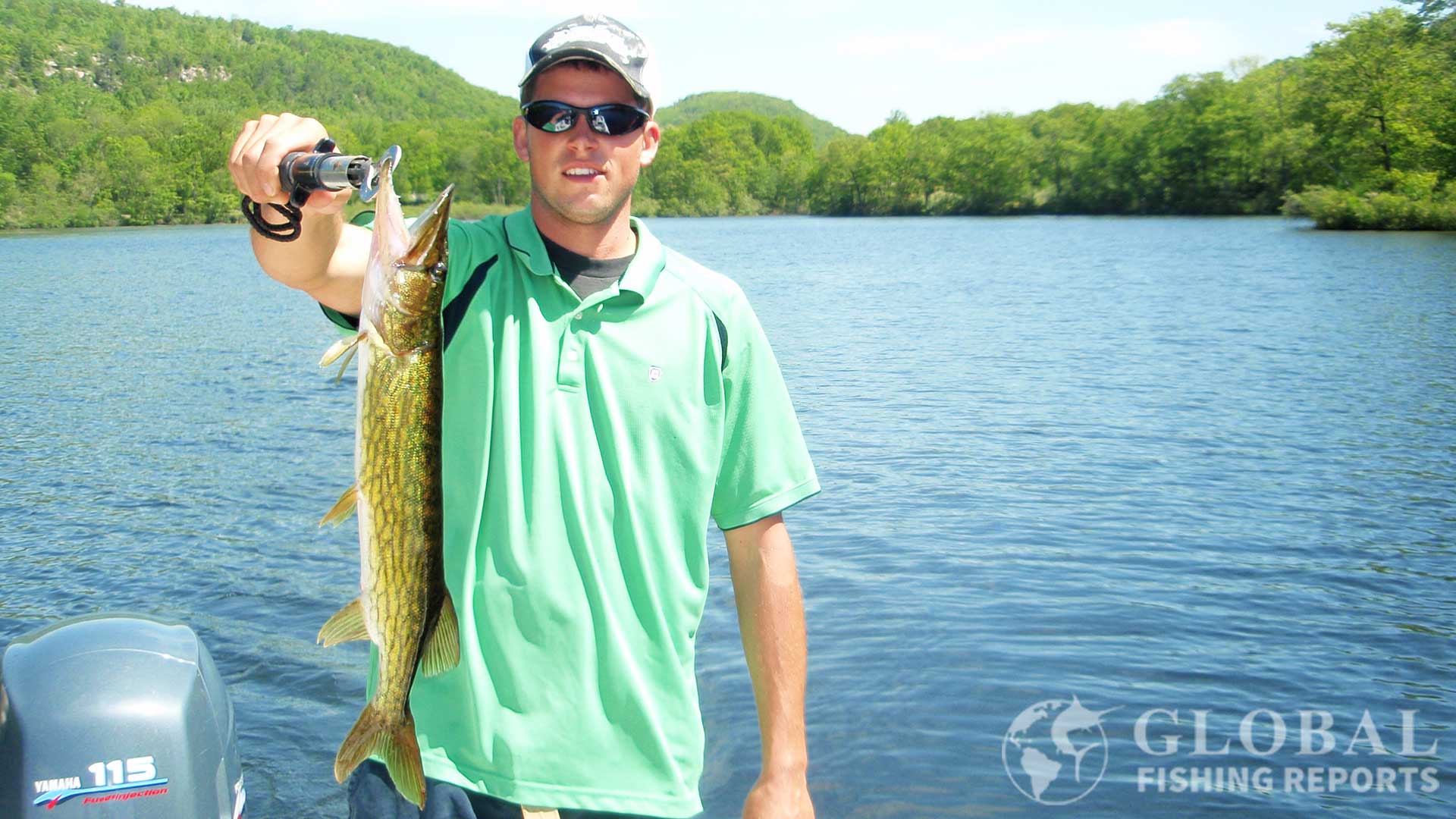
In the picture, my brother is holding a pickerel caught in a small lake in New Jersey.
Mepps Musky Killer
The Mepps Musky Killer is a large spinnerbait with a bucktail. It weighs 3/4 ounce and has a white spinner with a white and red tail. This lure comes in a large variety of tail colors and spinner blade colors. There is also a tandem version of this lure with two treble hooks that is made just for musky fishing. The single hook version works well to catch bass, pickerel, northern pike, hybrid striped bass, and musky.
Most pickerel anglers might think that this lure is two larger for pickerel. However, it works well to catch pickerel over 20 inches. I started using this lure in a pickerel tournament with the intention of only catching the larger fish. It worked out well. Even a number 5 Mepps that weighs 1/2 ounce will catch many small pickerel. Pickerel are ferocious and will bite baits almost as big as themselves.
Mepps Magnum Musky Killer
A Mepps Mangum musky Killer has a six bead-shaped body and weighs 1-1/4 ounce. It comes in blade colors of nickel, copper, gold, hot orange, hot firetiger, silver rainbow trout, and silver. This lure works well for mucky and northern pike. It is a bit large for pickerel but if you only want to target larger fish this is an option. The lure is 143 percent larger than the standard musky killer that does work well at catching pickerel.
Spinnerbait Pickerel Lure
The mini-king spinnerbait is 1/8 ounce and has a single hammered colorado blade. Color options include white, black, black-blue, chartreuse-white, red, and sun perch. Almost any spinnerbait will work for pickerel just retrieve the bait fast.
Spinnerbaits are not my go-to lure but are always fun to experiment with under certain conditions. I try these for bass and typically slam the pickerel with them which is why they are on the list for top pickerel lures. This bait can be reeled in fast to cover lots of water which is the recipe for success when it comes to pickerel. Typically I would use a spinnerbait if the weeds are set in the 6-10 feet of water range which is deeper depth then where I would typically target pickerel.
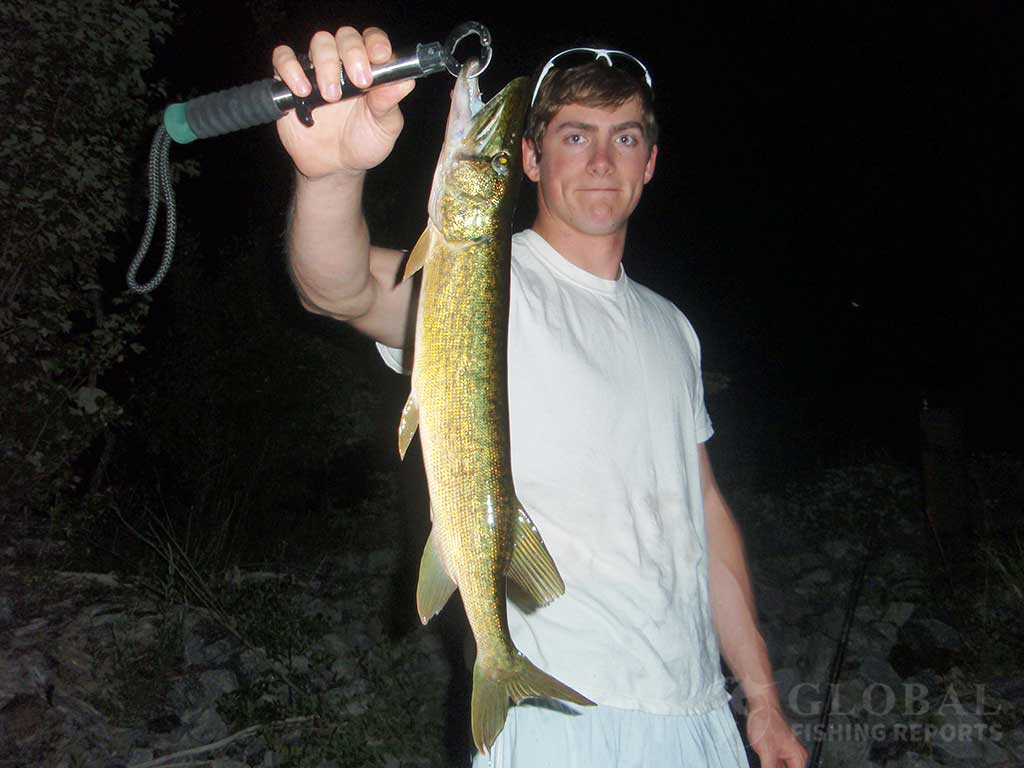
In the picture, I am holding a pickerel that was caught in low light conditions. Pickerel bite well at dusk and at night but I actually prefer to fish for them in the middle of the day.
Crankbaits
Rapala Husky Jerk
Husky Jerks come in sizes HJ06 which is 2-1/2 inches, HJ08 which is 3-1/8 inches, HJ10 which is 4 inches, HJ12 which is 4-3/4 inches, and HJ14 which is 5-1/2 inches.
The Husky Jerk is a great lure for any fish in the pike family. Changing lure speeds triggers these fish to strike. The Husky Jerk looks great when not moving at all and when traveling at high trolling speeds.
This lure even works when the fish are not being overly aggressive because the decision to strike can be an instinct bite, not because the fish is hungry. The method to fish this lure is to make it look like an injured fish. Short fast jerks with pauses to allow the fish time to strike. Predator fish seem to have a hard time not biting an injured fish!
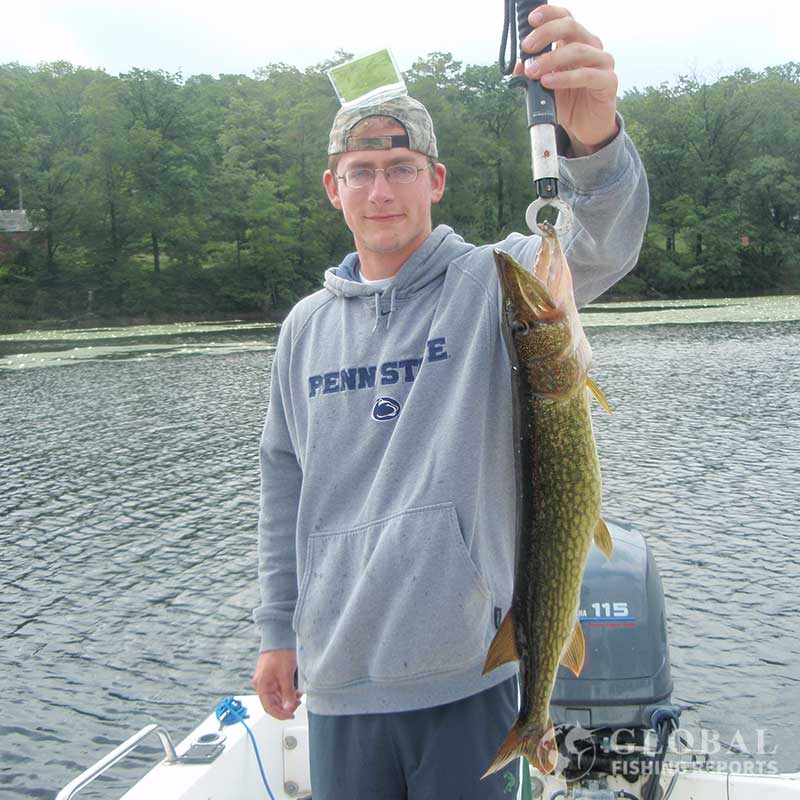
In the picture is a pickerel that I caught in some shallow lily pads.
Jointed Rapala Pickerel Lure
This J09 jointed Rapala is 3-1/2 inches long and weighs 1/4 ounce. It comes rigged with two number 5 treble hooks and runs at a depth of around 5 feet. Color options are blue, silver, firetiger, gold, perch, rainbow trout, and yellow perch. There are many sizes of jointed Rapalas from the 2 inch J05 to the 5-1/4 inch J03 which weighs 5/8 ounces. All of these sizes will work to catch pickerel.
The jointed Rapala works well for pickerel because it is meant to run fast. Pickerel like fast-moving baits. Features of the lure include balsa wood construction, minnow profile, and VMC black nickel hooks. The lures are hand-tuned and tank-tested for consistent performance. These lures also work well when trolling for salmon and steelhead.
Rapala Rattlin Pickerel Fishing Lure
The Rapala Rattlin is a lipless bait than can be retrieved quickly in shallow water. This makes it a good pickerel lure. The lure comes in sizes of RNR04 which is 1-1/2 inches, RNR05 which is 2 inches, RNR07 which is 2-3/4 inches, and RNR08 which is 3-1/8 inches. This is a sinking lure that will run deeper at slow retrieve speeds.
Color options are firetiger, shad, silver blue, and silver gold. Key features of the bait are the lipless design, rattle chamber, balanced design, and black nickel VMC hooks. This is a classic bait for bass fishing but also works well for pickerel and northern pike.
Buzzbait
Booyah Pickerel Buzzbait
The Booyah Buzzbait is a popular topwater bait for bass fishing. The lure is if fished by casting out and retrieved it quickly on top of the water. Personally, I do not like this lure for bass fishing as bass are only aggressive enough to hit this type of bait occasionally. However, pickerel are almost always aggressive and this is a fun bait to catch them with.
The lure weighs 1-1/4 ounces and has a 4/0 Mustad hook. Features of the bait include painted aluminum blades, a 55-strand silicone skirt, and a clacker blade for additional vibration. Color options are black, limetreuse, snow-white, pearl white, citrus, and chartreuse.
Spoons
Johnson Weedless Spoon
The Johnson weedless spoon is a classic lure that has been around forever. It swirls from side to side and acts like an injured fish. I like using the 2 3/4 inch spoon which is a heavy 3/4-ounce as it can be cast very far. Further than you typically want to cast! The 2-inch 1/4 ounce size is good option for small fishing areas.
The weedless spoon is not truly weedless but having a hook guard and a single hook so it does better than most lures at avoiding getting caught on weeds. Color options are gold, silver, black, chrome trout, copper, nickel blue, and red-white.

In the picture, my brother and friend Ryan both caught pickerel at the same time.
Tools for Handling Pickerel
When catching pickerel, having the right tools is essential due to their sharp teeth. A lip gripper fish scale is an easy way to hold a fish while removing the hook from the fish. This gripper also has a built-in scale that can weigh fish up to 40 pounds. It is made with stainless steel grippers and a non-slip EVA handle.
If you catch fish with teeth having a lip gripper tool makes the hook removal process much easier and faster. This results in a healthy strong fish being released. Having a lip gripper is also nice for taking pictures.
Lip Gripper Tool to Hold Pickerel
The lip gripper fish scale is an easy way to hold a fish while removing the hook from the fish. This gripper also has a built-in scale that can weigh fish up to 40 pounds. It is made with stainless steel grippers and a non-slip EVA handle. The wrist strap on the handle is a nice feature in case the gripper is dropped while handing the fish. There is also a version that has a built-in tape measure. The gripper weighs 8.5 ounces.
If you catch fish with teeth having a lip gripper tool makes the hook removal process much easier and faster. This results in a healthy strong fish being released. Having a lip gripper is also nice for taking pictures. It is often difficult to weigh a live fish with a hook scale but with the lip gripper, it is very easy.
Lure Color Based on Water Conditions
The general rule for bait colors when fishing anywhere is dark lures in low light and murky conditions and bright lures on sunny days in clear water.
When fishing clear water on a bright day, lures with silver blades work great. Stick with bronze in murky water and in low light or overcast conditions.
Best lures for different water conditions goes here.
Fishing in Heavy Cover
Pickerel like being in shallow water that is often filled with lily pads and weeds. This makes using most baits difficult to fish with. A great option is a topwater frog bait. These are fished in a similar way as you would for bass but can be reeled in at a faster rate which can encourage pickerel to strike the bait.
When fishing for pickerel in heavy cover where spinners would pick up too many weeds, soft plastics like creature baits can be effective. When targeting pickerel with these baits, I jerk them aggressively to trigger strikes rather than using the slow presentation I’d use for bass.
Best lures for heavy cover goes here.
Fishing for Pickerel in Different Depths
While pickerel are typically found in shallow water (1-6 feet), they can also be found in deeper waters, especially during hot summer days.
When fishing for pickerel in water deeper than 8 feet, chatterbaits and crankbaits are good options. These lures can be retrieved quickly to trigger the aggressive feeding nature of pickerel.
Information About Pickerel Fish
Pickerel fish include redfin pickerel, grass pickerel, and chain pickerel. The redfin pickerel is commonly misidentified as a small musky because of the red fins and vertical stripes similar to musky. The grass pickerel is similar to a chain pickerel but also has vertical stripes.
Chain pickerel are often misidentified as small northern pike as they look very similar and pickerel are in the pike family. One important difference for identification purposes is that pickerel’s chain patterns or stripes do not continue onto the tail of a chain pickerel fish.
When pickerel fishing it is also common to catch bass, perch, hybrid striped bass, walleye, and crappie.
Seasonal Pickerel Fishing Strategies
Summer Pickerel Fishing
In summer, pickerel can often be found in weed beds and lily pads. Early morning and evening are typically the best times to fish for pickerel during hot summer days as they tend to be less active during the peak heat.
Winter Pickerel Fishing
In the winter, pickerel will be less active due to the cold water temperatures. Fish also feed less in the winter because their metabolism slows down. Pickerel will still bite and good baits are live baits like minnows, shad, and creek chubs. The bait works even if it is dead. Scented jigs are another option to fish for pickerel in the winter. It is quite common to catch pickerel while ice fishing.
Questions about Pickerel Fishing
Do pickerel teeth cut fishing line?
Yes, pickerel have sharp teeth and will cut fluorocarbon, monofilament, and braided fishing line. The trick is to use a stainless steel leader wire leader. The leader should have a ball bearing swivel on it so the line does not twist when using in-line spinners. Anglers often catch pickerel without wire leaders but the line should be checked for nicks and frays.
When targeting pickerel a wire leader should be used. However, when targeting bass a wire leader should not be used. Since both fish bite on the same lures, this can make it a difficult fishing situation. When fishing bass tournaments where there are pickerel, lots of time is spent releasing pickerel and re-tying the lure so the line is not weak from damage caused by the pickerel’s teeth. For this reason, many bass anglers do not like pickerel. Personally, I like catching pickerel and bass.
How big do pickerel get?
A large pickerel is any fish that is over 24 inches or 4 pounds. In New Jersey, they will give a skillful angler award to anyone who catches a 4-pound pickerel or one that measures 24 inches and is released. In some lakes, I can catch over 100 pickerel in a few hours. The average weight is around 2 pounds. A big pickerel is anything over 3 pounds.
Is a pickerel a northern pike?
No, a pickerel is a different type of fish than the northern pike. Both of these fish have similar patterns and pickerel are often identified as a small northern pike. The easiest way to identify a northern pike is that it will have spots on its fins and pickerel will not have spots on its fins. Northern pike also have smaller spots while pickerel spots are almost like a checker pattern. Small musky also look similar to a pickerel but will have a vertical stripe pattern.
Captain Cody has worked on charter fishing boats in the Florida Keys, Virgin Islands, and Alaska. Growing up in Pennsylvania Cody has also done extensive freshwater fishing including bass fishing tournaments. Cody strives to provide detailed information about the best fishing gear and tactics to help both novice and experienced anglers have a more productive and enjoyable time on the water. Cody also has a background in aerospace engineering and neuroscience but really only takes pride in being good at one thing and that is fishing!

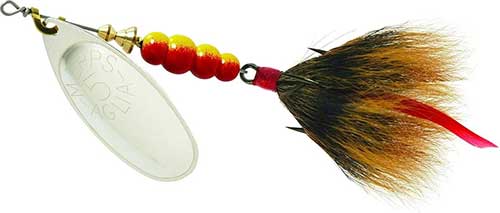

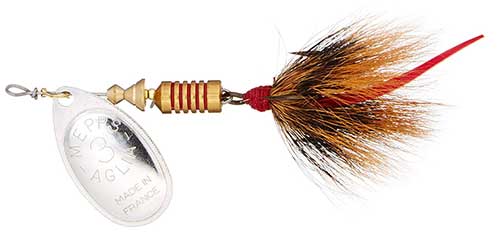

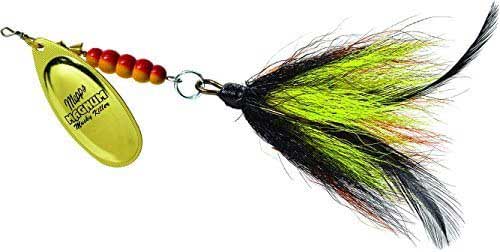
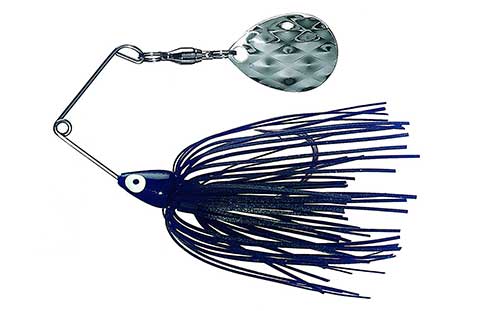


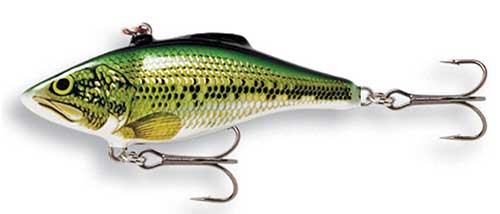




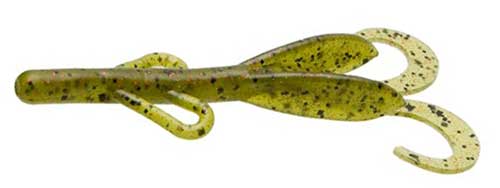
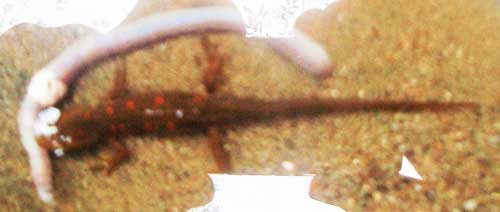

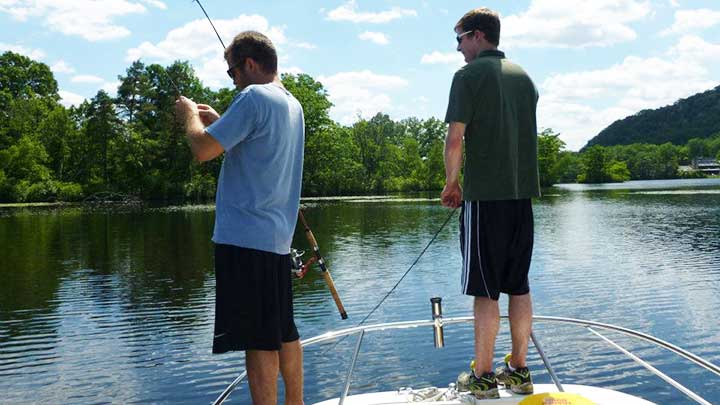
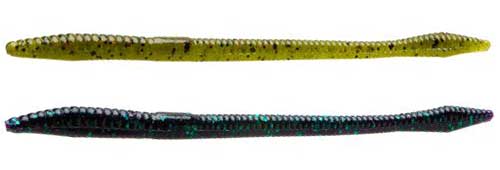


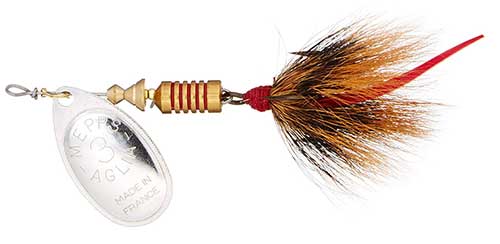
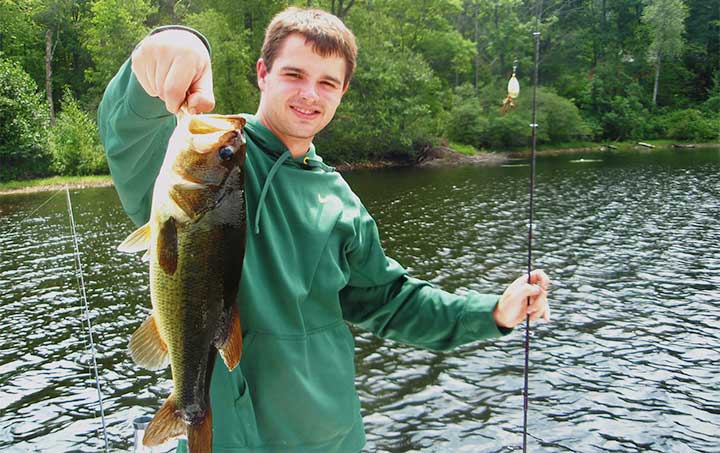
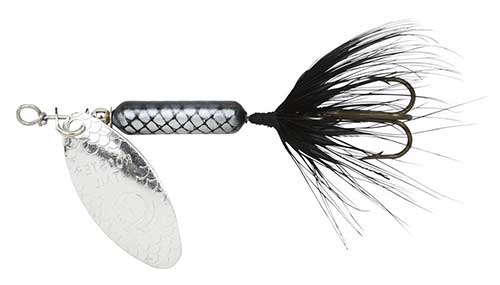
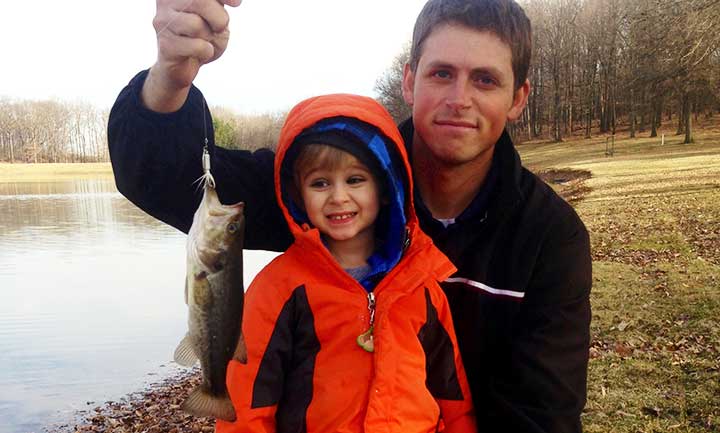
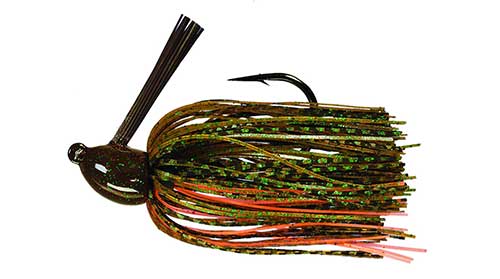

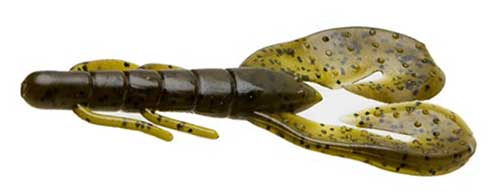
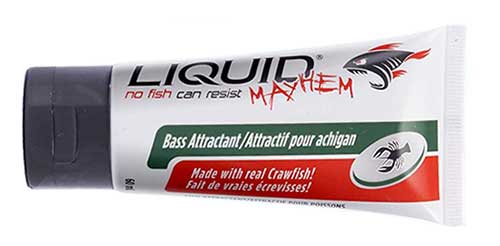
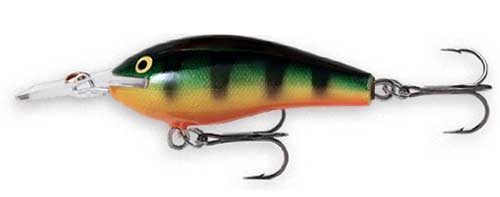


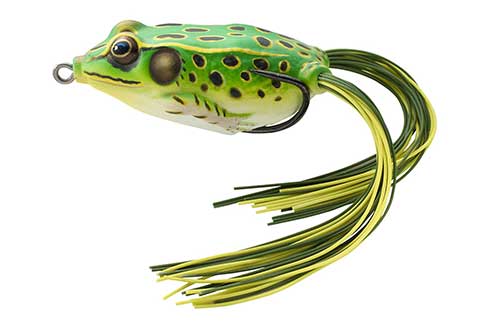
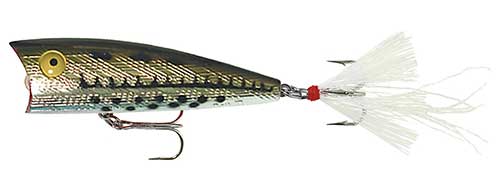
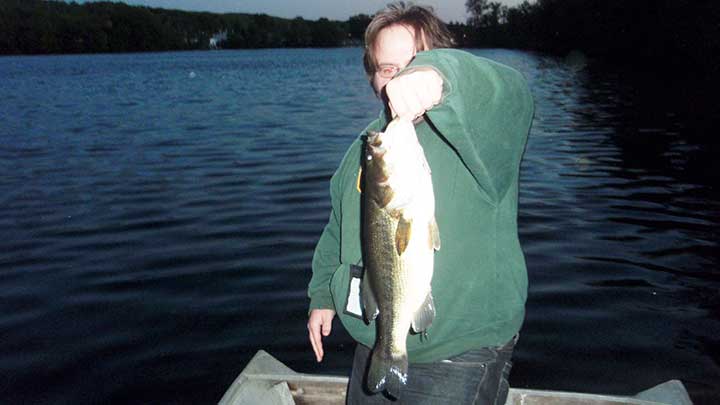

none of the fish in your pictures are pickeral? those are all pike, big difference in the baits they will take.
All the fish in the picture are chain pickerel. We caught then fishing in northern New Jeresy lakes.